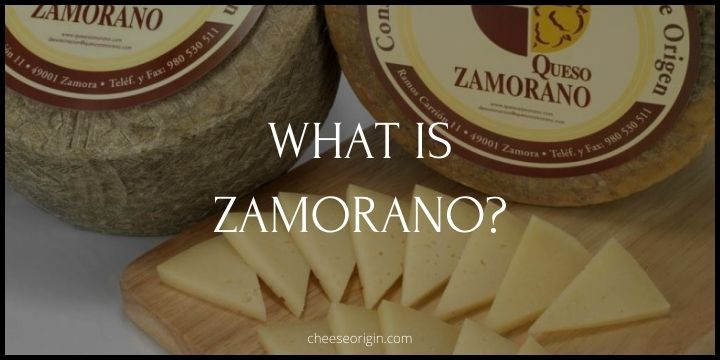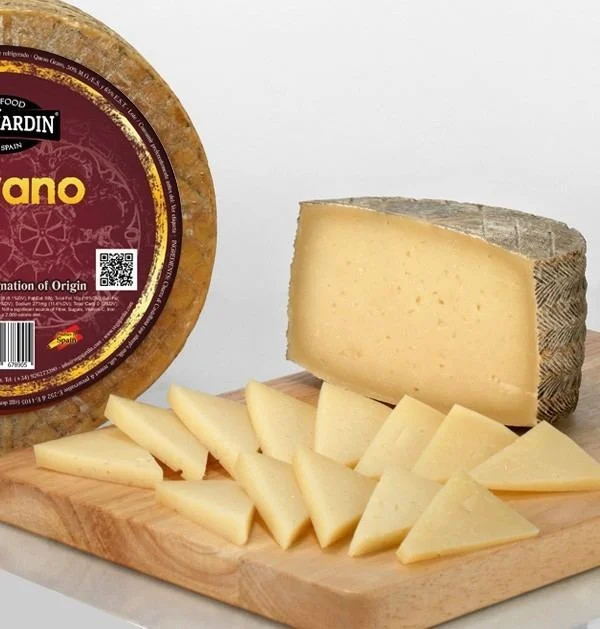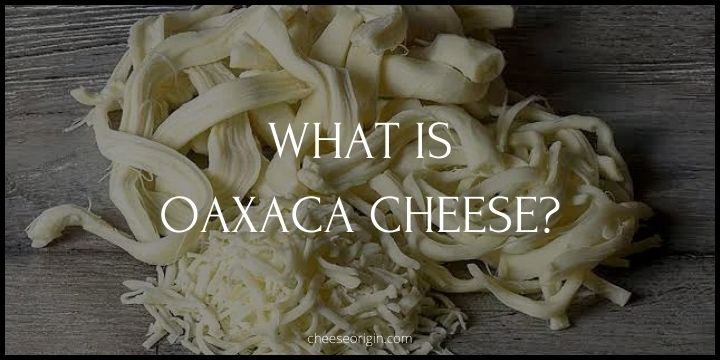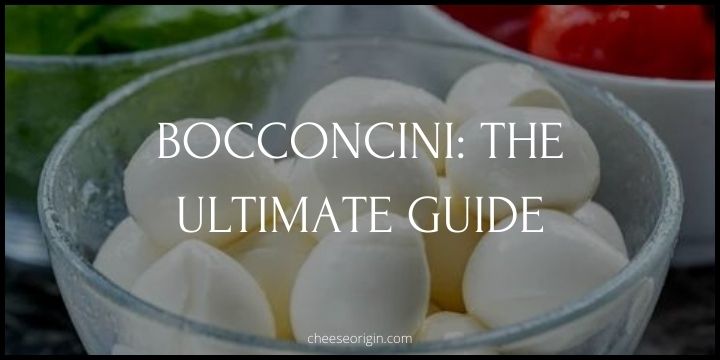What is Zamorano? Spain’s Hidden Dairy Gem

Nestled within the heart of Spain, a region known as Zamora has been quietly crafting a dairy delight that cheese enthusiasts around the globe simply adore. This hidden gem is none other than Zamorano, a sheep’s milk cheese that offers an unmatched gastronomic experience.
Bursting with a complex blend of flavors and possessing a distinct, crumbly texture, this cheese is a testament to Spain’s rich culinary culture. But what exactly is Zamorano, and what makes it so special? Let’s delve into the captivating world of this Spanish marvel to uncover the secrets behind its irresistible charm.
Quick Facts About Zamorano
| Quick Facts | Details |
|---|---|
| Origin | Zamora, Spain |
| Cheese Type | Hard, aged cheese |
| Milk Source | Sheep’s milk, specifically from the Churra and Castellana breeds |
| Production Process | Handmade, aged for at least 100 days |
| Flavor Profile | Nutty, buttery, with a hint of piquancy |
| Texture | Firm, granular, with small eyes (holes) |
| Appearance | Drum-shaped, with a distinctive crosshatched pattern on the rind |
| Pairings | Full-bodied red wines, fig jam, crusty bread |
| Protected Designation | Protected Designation of Origin (DOP) status in the EU since 1996 |
| Serving Suggestions | Sliced thin, at room temperature, often served as part of a cheese platter |
| Nutritional Value | High in protein and calcium, but also high in fat and calories |
| Shelf Life | Can last up to a year if properly stored in a cool, dry place |
| Popular Use | Grated over pasta dishes, melted in casseroles, or simply enjoyed on its own |
| Availability | Available at specialty cheese shops and online, may be more difficult to find outside of Spain |
| Unique Characteristic | The flavor intensifies as the cheese ages. The older the cheese, the stronger the flavor. |
What is Zamorano?

Zamorano is a captivating cheese that hails from the enchanting region of Zamora in Spain. Crafted from the milk of Churra and Castellana sheep, this hard, aged cheese carries a rich tradition, embodying the flavors and spirit of its homeland. Each wheel is handmade with painstaking attention to detail, a testament to the artisanal skills passed down through generations.
The production process of Zamorano is a fascinating dance of time-honored techniques and patience. Aged for at least 100 days, each wheel of cheese slowly develops a firm, granular texture and a distinctive crosshatched pattern on the rind, a signature trait of Zamorano. The result is a drum-shaped delight that stands as a proud symbol of Zamora’s cultural heritage.
But it’s the taste that truly sets Zamorano apart. Its flavor profile is a delightful journey for the palate – starting with a nutty, buttery base, gradually revealing a hint of piquancy that lingers on the tongue. This complex symphony of flavors makes Zamorano a favorite among cheese connoisseurs.
The versatility of Zamorano is another of its charming qualities. It can be grated over pasta dishes, melted into casseroles, or simply enjoyed on its own. Paired with a full-bodied red wine, it becomes an experience to savor. Despite its international acclaim, finding Zamorano outside of Spain can be a bit of a treasure hunt, making every encounter with this unique cheese all the more special.
In conclusion, Zamorano is more than just a cheese – it’s a piece of Zamora’s soul, a culinary ambassador that invites us to take a bite and step into a world of rich traditions and exquisite flavors.
What Does Zamorano Taste Like?
The initial tasting note of Zamorano is a harmonious blend of sweet, nutty, and salty tones. This combination lends itself to a rich, savory flavor that sets Zamorano apart from other cheeses. As you delve deeper into the taste, a slightly piquant undertone emerges, adding a delightful zing that enhances the overall flavor experience.
Furthermore, Zamorano offers a buttery richness that subtly complements its robust character. Sometimes, you will even detect a hint of burnt caramel, further enriching the tapestry of flavors this cheese has to offer.
Often compared to Manchego, another popular Spanish cheese, Zamorano holds its own with a taste that is nuttier, richer, and often more piquant. The zesty flavor of Zamorano tends to last longer on your tongue, making every bite a lingering culinary delight.
Zamorano Tasting Notes
Young Zamorano Cheese:
This version of the cheese is typically aged for around 2 months. It has a creamy, mild flavor with a slight tang. The texture is soft and pliable, perfect for melting in dishes. The nutty undertones are just starting to develop at this stage, making it a versatile cheese for various culinary uses.
Medium-Aged Zamorano Cheese:
Aged for about 4 to 6 months, this cheese starts to develop a firmer texture and more complex flavors. The initial creamy sweetness gives way to a more pronounced nuttiness, with a hint of piquancy emerging.
Fully Aged Zamorano Cheese:
This is Zamorano at its peak, aged for a minimum of 6 months, but often up to a year or more. The texture is now firm and granular, with a characteristic crumble. The flavor is robust and well-developed – richly savory, intensely nutty, and with a pronounced piquant edge that lingers on the palate. The buttery undertones add a layer of complexity, balancing out the strong flavors. This cheese is perfect for savoring on its own or pairing it with a full-bodied red wine.
How to Eat Zamorano Cheese?
- Savor Solo: One of the best ways to truly appreciate the complex flavors of Zamorano cheese is to enjoy it on its own. Allow a slice to come to room temperature before eating to fully experience its rich, nutty, and slightly piquant profile.
- Cheese Board: Incorporate Zamorano into a cheese board. Pair it with other Spanish cheeses like Manchego or Tetilla, add some cured meats like Jamón Serrano or Chorizo, and include accompaniments like Marcona almonds, olives, and fig jam. The varied flavors will complement and enhance the taste of the Zamorano.
- With Wine: Zamorano pairs beautifully with robust wines. Try it with a full-bodied Spanish red like Rioja or Ribera del Duero. The wine’s tannins will cut through the rich, creamy texture of the cheese, creating a delightful balance on your palate.
- Cooking Ingredient: Melt young Zamorano over potatoes, pasta, or steamed vegetables for a deliciously creamy and savory dish. Its distinct flavor can elevate simple recipes to gourmet status.
- Dessert Pairing: Pair Zamorano with sweet elements for a decadent dessert. Drizzle a slice with honey, serve it with ripe pears, or pair it with dark chocolate for a unique after-dinner treat. The sweetness of these accompaniments provides a delightful contrast to the salty, nutty flavor of the cheese.
- In Sandwiches: Use slices of Zamorano in sandwiches. It pairs well with cured meats, roasted vegetables, and hearty breads. The cheese’s firm texture and strong flavor hold up well, adding a gourmet touch to your sandwich.
10 Best Zamorano Cheese Substitutes
| Substitute | Description | Best Usage |
|---|---|---|
| Manchego | Another Spanish sheep’s milk cheese, Manchego has a similar firm texture and nutty flavor, but is slightly less piquant. | Cheese boards, sandwiches, solo. |
| Pecorino Romano | An Italian sheep’s milk cheese with a strong, salty flavor. It’s more crumbly than Zamorano. | Grating over pasta, risotto. |
| Idiazabal | A Basque cheese made from sheep’s milk. It’s smoky and slightly tangy, with a comparable texture to Zamorano. | Solo, in sandwiches, with fruits. |
| Asiago | An Italian cow’s milk cheese that can be mild when young and becomes more pungent with age. | Cooking, melting, grating. |
| Gouda | A Dutch cheese known for its rich, slightly sweet flavor. Young Gouda is creamy and mild, while aged Gouda is hard and nutty. | Cheese boards, sandwiches, cooking. |
| Parmigiano-Reggiano | This Italian hard cheese has a granular texture and a complex, nutty flavor. | Grating over dishes, cheese boards, solo. |
| Cheddar | An English cheese that can range from mild to sharp. Aged cheddar has a similar firmness and tang to Zamorano. | Cooking, sandwiches, cheese boards. |
| Gruyere | A Swiss cheese with a creamy, nutty flavor. It melts well, making it a good substitute in cooked dishes. | Melting, gratins, fondues. |
| Roquefort | A French blue cheese made from sheep’s milk. It’s strong and tangy, but could work if you enjoy bold flavors. | Cheese boards, salads, dressings. |
| Queso Iberico | A Spanish cheese made from a blend of cow’s, sheep’s, and goat’s milk. It has a balanced flavor and a firm texture similar to Zamorano. | Cheese boards, sandwiches, solo. |
What Pairs Well With Zamorano?

Food that goes well with Zamorano:
| Category | Foods |
|---|---|
| Fruits | Apples, Pears, Grapes, Figs, Dates, Dried Apricots |
| Nuts & Seeds | Almonds, Walnuts, Pistachios, Pumpkin Seeds |
| Meats | Jamón Serrano, Chorizo, Prosciutto, Salami |
| Breads & Crackers | Baguette, Sourdough, Rye, Multigrain Crackers, Water Crackers |
| Condiments & Spreads | Honey, Quince Paste, Fig Jam, Olive Tapenade, Whole Grain Mustard |
| Vegetables | Roasted Red Peppers, Marinated Artichokes, Olives, Sun-dried Tomatoes |
| Sweets | Dark Chocolate, Milk Chocolate, White Chocolate, Caramel |
| Herbs & Spices | Rosemary, Thyme, Paprika, Black Pepper |
| Others | Pickles, Capers, Anchovies |
Also read: What Fruit Goes on a Charcuterie Board?
Beverage that goes well with Zamorano:
| Category | Beverages |
|---|---|
| Wine | Rioja, Ribera del Duero, Tempranillo, Sherry, Cava |
| Beer | Craft Ales, IPA, Stout, Belgian Dubbel |
| Whiskey | Scotch, Irish Whiskey, Bourbon |
| Non-Alcoholic | Sparkling Water, Apple Cider, Grape Juice |
| Tea | Earl Grey, Chai, English Breakfast |
| Coffee | Espresso, French Press, Cold Brew |
| Liqueur | Port, Madeira, Grand Marnier, Amaretto |
| Cider | Dry Hard Cider, Spanish Sidra |
| Spirits | Brandy, Armagnac, Cognac |
Also read: Best Wine and Cheese Pairings: The Ultimate Guide
Also read:
- What is La Tur Cheese? The Italian Cheese That Melts Hearts
- What is Goat Gouda? A Refreshing Twist on a Dutch Classic
- What is Aged Gouda? The Art of Aging
- What is La Vache Qui Rit? The Laughing Cow Cheese
- What is Berkswell? The Rustic Gem of English Cheeses
- What is Double Gloucester? The Taste of English Tradition
- What is Longhorn Cheese? The Mild and Buttery Delight from America





